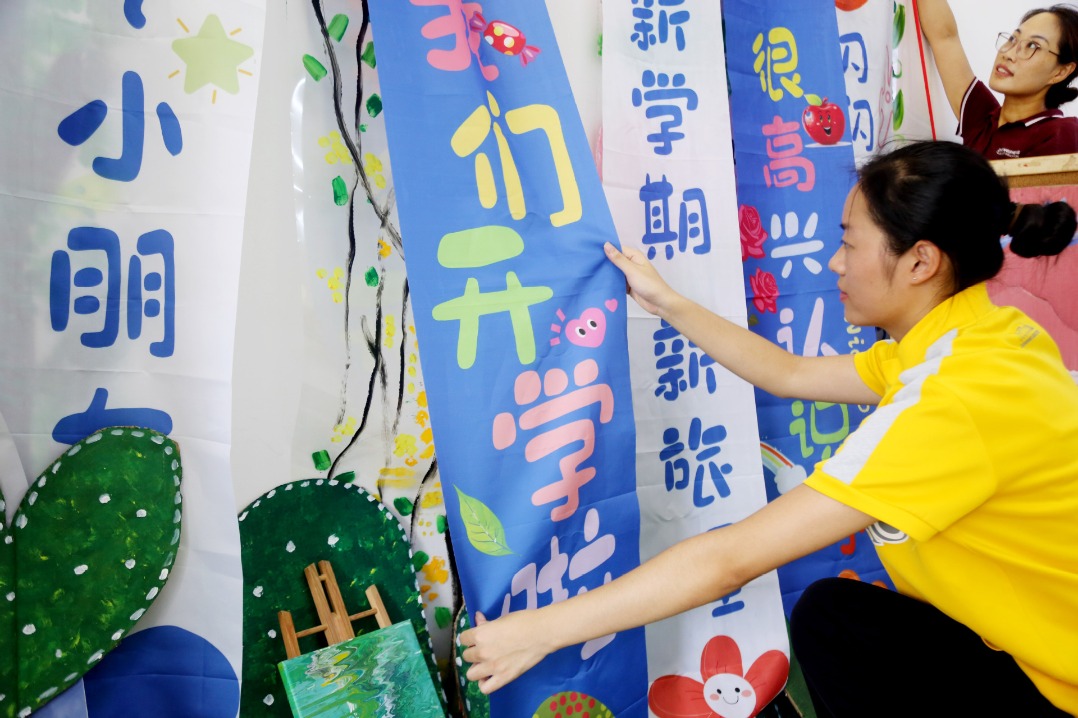河南博物院迎來暑期“文博熱” Henan sees summer surge in educational visits to museums
chinadaily.com.cn 2024-08-23 17:29

As the summer vacation (暑假, shǔ jià) nears its end, the fervor of visitors flocking to museums shows no signs of waning despite the scorching heat (酷熱難耐, kù rè nán nài). With the growing popularity of cultural artifacts (文物, wén wù), museums have transformed into vital hubs for individuals seeking enriching cultural experiences and educational leisure. (文化體驗(yàn)和教育休閑,wén huà tǐ yàn hé jiào yù xiū xián)

Currently, museums across Central China's Henan province are witnessing a peak in educational and family tours. Many museums have extended their operating hours into the evening, streamlined reservation procedures (簡化預(yù)訂程序, jiǎn huà yù dìng chéng xù), and organized special events (組織特別活動(dòng), zǔ zhī tè bié huó dòng) to enhance visitors' overall experience (提高游客整體體驗(yàn), tí gāo yóu kè zhěng tǐ tǐ yàn).
At the Luoyang Museum of Ancient Tombs (洛陽古墓博物館, luò yáng gǔ mù bó wù guǎn), visitors can explore the significant archaeological findings and delve into the cultural significance embedded within the architecture (建筑, jiàn zhù), murals (墓室壁畫, mù shì bì huà), sculptures (磚雕藝術(shù), zhuān diāo yì shù), utensils, decorations, and inscriptions (銘文, míng wén) found in diverse tombs spanning different historical periods.

Through a variety of exhibition techniques, the museum constructs a temporal and spatial bridge, enabling visitors to immerse themselves in ancient tomb culture (古墓文化, gǔ mù wén huà) and the ancient Chinese perspective on life and death (中國古人的生死觀, zhōng guó gǔ rén de shēng sǐ guān), fostering a deep understanding of the concept of "treating death as a part of life."
The Erlitou Site Museum of the Xia Capital (二里頭夏都遺址博物館, èr lǐ tóu xià dū yí zhǐ bó wù guǎn) leverages its rich historical and cultural resources to develop over 30 tailored educational programs for children of varying ages. These programs cover a wide array of topics, including the Erlitou culture, the Xia Dynasty's history, archaeological excavations, the essence of Yellow River culture, and intangible heritage experiences.

Shi Muyang, the museum's deputy director of research and education, highlights the growing popularity of these educational programs (教育項(xiàng)目, jiào yù xiàng mù). By August of this year, reservations for these programs have surpassed 160 sessions, marking a substantial increase of over 40 classes compared to the total number in 2023.
At the Yangshaocun site (仰韶村遺址, yǎng sháo cūn yí zhǐ) in Mianchi county of Sanmenxia city (三門峽市澠池縣, sān mén xiá shì miǎn chí xiàn), visitors can participate in a variety of activities such as pottery-making (陶器捏制, táo qì niē zhì), vibrant paintings (拼圖彩繪, pīn tú cǎi huì), and rubbings (拓片制作, tà piàn zhì zuò), immersing themselves in the millennia-spanning Yangshao culture (仰韶文化, yǎng sháo wén huà).

According to statistics from the Ministry of Culture and Tourism, the Luoyang Museum (洛陽博物館, luò yáng bó wù guǎn) welcomed a total of 323,600 visitors from July 1 to 31 alone, marking an increase of 30,000 compared to the same period last year.
來源:chinadaily.com.cn
編輯:萬月英

















 英語點(diǎn)津微信
英語點(diǎn)津微信 雙語小程序
雙語小程序